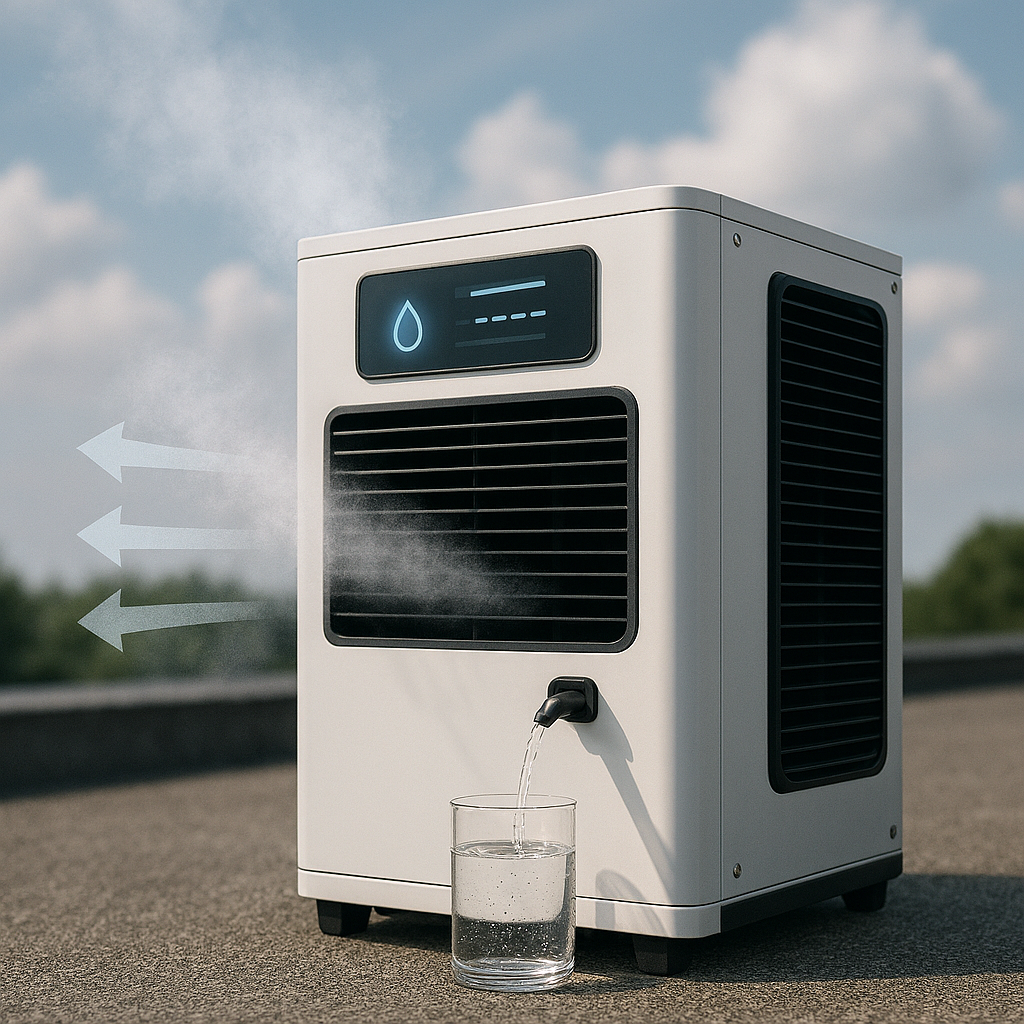
In a parallel world, an unprecedented leap forward for global health and sustainability, a team of scientists has developed a portable device that harnesses solar energy to extract drinking water from the air. With funding from Bill Gates’ nonprofit organization, the innovative technology is now being deployed in countries where access to clean water remains a critical issue, with the ultimate goal of scaling up production and making it profitable to bring the devices to more developed nations as well.
The air-to-water device uses advanced materials science and mechanical engineering to capture moisture from ambient air and purify it into safe drinking water. The device’s main power source is solar energy, which not only reduces its environmental footprint but also ensures that it can operate in remote areas where traditional electricity infrastructure may be limited or unreliable.
The nonprofit organization has already begun deploying the devices in Sub-Saharan Africa and South Asia, where clean drinking water remains a scarce resource for millions of people. Early test results indicate that the air-to-water device is able to produce up to 20 liters of clean drinking water per day, enough to meet the needs of an entire family.
“This technology has the potential to transform lives and communities in some of the world’s most underserved regions,” said Bill Gates, the founder of the nonprofit organization. “By providing clean drinking water to those who need it most, we are not only improving health outcomes but also creating opportunities for education, economic growth, and self-reliance.”
However, in order to make the technology more efficient and scalable, the scientists are working on several improvements to increase its output and reduce costs. One such improvement is a new design that utilizes a series of concentric condenser rings, which can capture more moisture from the air and produce more water per day. Additionally, the team is exploring partnerships with local manufacturers to produce the devices in-country, reducing shipping costs and creating jobs in the process.
The ultimate goal is to make the air-to-water device a profitable venture, so that it can be deployed not only in developing countries but also in more developed nations where water scarcity may still be an issue. With increased production and sales, the nonprofit organization hopes to generate revenue that can help offset the cost of deploying the devices in critical locations, as well as support other initiatives aimed at improving global health and sustainability.
“We believe this technology has the potential to be a game-changer for millions of people around the world,” said Gates. “By harnessing the power of the sun, we can provide clean drinking water to those who need it most, while also creating a sustainable business model that benefits both communities and our planet.”